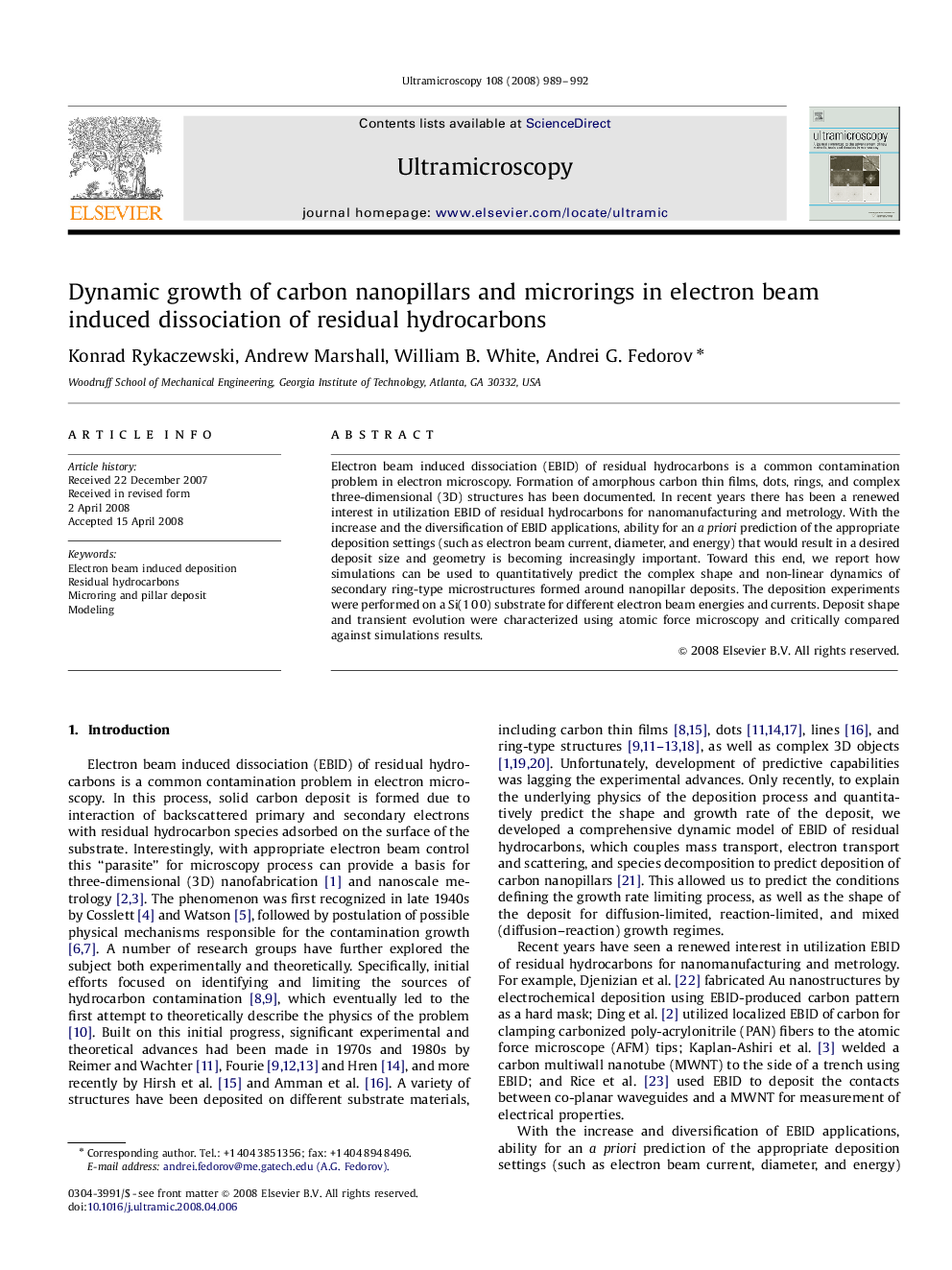| Article ID | Journal | Published Year | Pages | File Type |
|---|---|---|---|---|
| 1679021 | Ultramicroscopy | 2008 | 4 Pages |
Electron beam induced dissociation (EBID) of residual hydrocarbons is a common contamination problem in electron microscopy. Formation of amorphous carbon thin films, dots, rings, and complex three-dimensional (3D) structures has been documented. In recent years there has been a renewed interest in utilization EBID of residual hydrocarbons for nanomanufacturing and metrology. With the increase and the diversification of EBID applications, ability for an a priori prediction of the appropriate deposition settings (such as electron beam current, diameter, and energy) that would result in a desired deposit size and geometry is becoming increasingly important. Toward this end, we report how simulations can be used to quantitatively predict the complex shape and non-linear dynamics of secondary ring-type microstructures formed around nanopillar deposits. The deposition experiments were performed on a Si(1 0 0) substrate for different electron beam energies and currents. Deposit shape and transient evolution were characterized using atomic force microscopy and critically compared against simulations results.
